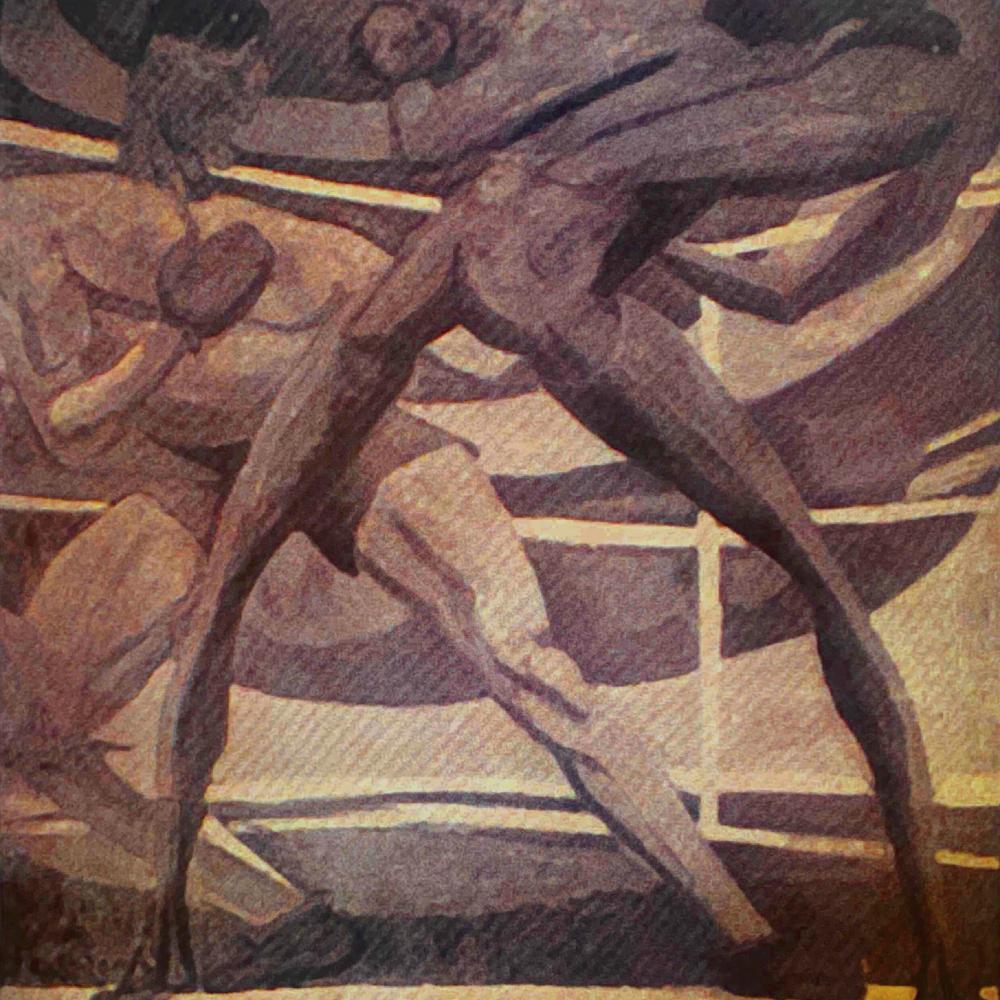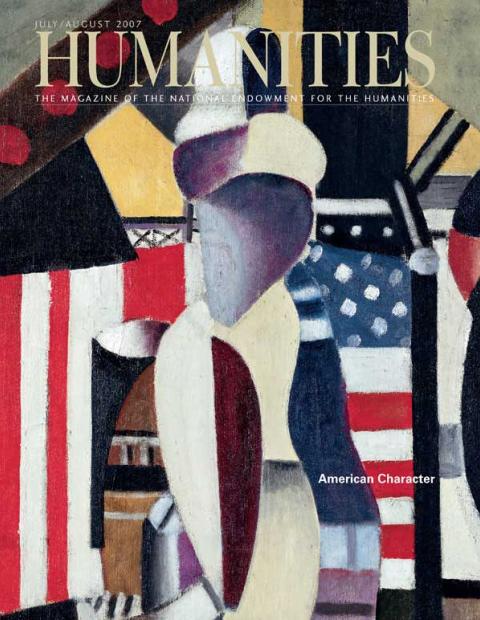Published in London every Thursday morning, the modernist magazine The New Age was a boundless source of ideas during its heyday from 1907 to 1922. The New Age was “the Bible for our generation,” recalled British author Storm Jameson. “We would rather go hungry than not buy it. We quoted it, argued with it, and formed ourselves on it.”
The New Age informed its readers about the new field of psychoanalysis, debated different versions of socialism, published translations of Chekhov’s plays, popularized the novels of Dostoyevsky and Tolstoy, and explored post-impressionism and abstract art. Its pages included some of Katherine Mansfield’s first stories, regular contributions by the cartoonist Tom Titt, more than a hundred reviews of music and art by Ezra Pound, a defense of homosexuality by Havelock Ellis, and reports from correspondents around the world.
Instead of following one editorial line, The New Age was known for its medley of perspectives. Each issue featured essays, reviews, and articles on politics, economics, literature, the arts—and just about any other subject that caught the interest of its editor, Alfred Richard Orage. “He was not afraid of the talent of other people. He was a great provoker of thought in others,” says Professor Robert Scholes of Brown University, whose team at the NEH-supported Modernist Journals Project has made the entire 1907-22 run of The New Age—more than sixteen thousand pages—available online.
Orage excelled at finding strong writers. The New Age “contributors have always been searched for zealously and indefatigably,” reported columnist Arnold Bennett, who wrote under the pen name Jacob Tonson. “They have been compelled to come in—sometimes with a lasso, sometimes with a revolver, sometimes with a lure of flattery; but they have been captured.” At one time or another, Orage’s editorial lasso pulled in George Bernard Shaw, G. K. Chesterton, Hilaire Belloc, H. G. Wells, Upton Sinclair, John Galsworthy, E. Nesbit, and the poet Siegfried Sassoon.
Orage built a loyal following of writers despite the fact that he rarely paid them. With The New Age perpetually in debt, he provided fees primarily to those who desperately needed the money—joking to others that the magazine might as well have been named No Wage. Many writers who could (and did) get paid elsewhere, contributed to The New Age because it offered the freedom to speak their minds. “The golden rule is that there is no golden rule. Give me a man who writes sincerely and I’ll respect his opinions,” Orage declared in 1909. But contributors also had to write well. “Sincerity without beauty is almost certain to result in lies,” he contended. “Until a writer can express his opinion beautifully he is not sure of it. The deeper the conviction, the more beautiful its expression.”
Orage was famously kind to young would-be authors, replying to each submission with a personal note composed and sent on the day that the article arrived. His rejection letters often mixed unsparing criticism with friendly encouragement. Over time, this approach added fresh talent to his contributor pool.
The New Age’s precarious finances must have been all too familiar for Orage, who was brought up in genteel poverty. After a local benefactor paid his way through a teacher-training college, Orage taught at a Yorkshire elementary school for several years and embarked on a marriage that later failed. In his free time, he joined the Independent Labor Party and became interested in the writings of the German philosopher Friedrich Nietzsche and the mystical philosophy of theosophy, an odd mix of ideas that he would hold throughout most of his life. In the early 1900s, he and his friends Holbrook Jackson and Arthur Penty cofounded the Leeds Arts Club, attracting influential speakers such as William Butler Yeats, Chesterton, Belloc, and Shaw.
In 1905 and 1906, Orage and Jackson migrated to London, where they helped found the Fabian Arts Group. Focused on socialism and art, the group formed under the auspices of the Fabian Society, the leading British socialist group. Meanwhile, Orage and Jackson became interested in editing their own magazine. With financial support from Shaw and a theosophist banker, Lewis Wallace, they purchased The New Age, relaunching it as their own in May 1907. Jackson departed some months later, leaving Orage as sole editor.
Still in his early thirties when he took the helm, Orage was described by Shaw as “the pleasantest of good company.” A tall man who wore his hat jauntily at the back of his head, he favored silk ties in bright colors. “His eyes were hazel, lively, and challenging, and in moments of excitement they seemed to emit a red glint,” Jackson recalled. “It was a feline face and there was something cat-like in his movements. He walked as though he were going to pounce on something, much as his mind pounced upon an idea or an opponent.”
“There was wit in his poise and manner and he was good to look at without being good-looking,” Jackson continued. “But he did not impress by his features so much as by that which was outside and beyond his features. You were conscious of his aura . . . even his small talk was fascinating. The odd remarks and unpremeditated sallies, often trivial, were always amusing and sometimes something more.”
Orage’s writers had ample opportunity to observe these traits at the Monday afternoon gatherings where he reviewed the proofsheets for the weekly issue. Often the group adjourned to a café or restaurant for the evening, with Orage joining the conversation without dominating it.
Orage, Scholes explains, “really believed in debate and discussion” He used running debates to drum up interest in the magazine, often alerting readers to some new volley from one side or the other with a front-page headline.
One famous exchange began in late 1907 with Hilaire Belloc’s essay, “Thoughts about Modern Thought,” describing what he saw as dangerous trends in socialism. After a flurry of readers’ letters in reply, Belloc’s intellectual ally G. K. Chesterton chimed in with his own essay, “Why I am Not a Socialist.” H. G. Wells, supporting the socialist cause, fired back with “About Chesterton and Belloc.” But what raised the dispute above the ordinary was the next installment—a lengthy piece by George Bernard Shaw in which he described a four-legged, costumed creature he gleefully named the Chesterbelloc.
Chesterton, Shaw explained, provided the back legs of the Chesterbelloc and Belloc the front—an uncomfortable arrangement that forced Chesterton to adopt Belloc’s views. “To co-ordinate the movements of the Chesterbelloc, Chesterton has to make all the intellectual sacrifices that are demanded by Belloc,” Shaw wrote. Yet Chesterton and Belloc, he believed, were in reality fundamentally at odds. “The Chesterbelloc is an unnatural beast which must be torn asunder to release the two men who are trying to keep step inside its basket-work.”
Readers breathlessly awaited Chesterton’s reply, which arrived a few issues later. Defiantly, he stood by Belloc and their evolving approach to property ownership and social justice, which came to be called distributism. “This monstrous animal, the Chesterbelloc, with its horrible forelegs and hideous hind legs,” Chesterton wrote proudly, “is Humanity on the move.”
For some readers, meanwhile, the bizarre image had run its course. A letter by New Age reader Eric Dexter remarked “Continue to chase your tails, Olympic kittens,” referring to Shaw, Chesterton, Belloc, and Wells. He urged them to steer the debate back to the fundamental disagreement. Their exchange continued into 1909.
In the visual arts, The New Age also offered a multiplicity of views. When Scholes began preparing the digital edition of the magazine, he says he “thought there might be a few dozen artists” who were mentioned or discussed. Instead, he found himself producing biographical entries and seeking sample artworks for more than a thousand. While the magazine exposed readers to post-impressionism, cubism, and futurism, it was equally hospitable to the artist Walter Sickert, who viewed such approaches as dead-ends. A regular New Age contributor of essays, drawings, and reviews, Sickert advocated a kind of realistic impressionism, sometimes called neorealism, that reflected his own style as an artist.
Orage cultivated readership through the use of multi-installment series issued over months or even years. Sickert, for example, edited a series of “Modern Drawings,” quickly rivaled by a “Contemporary Drawings” series of more innovative works edited by regular contributor T. E. Hulme. Hulme, who was killed in action in September 1917, wrote the “War Notes” series under the pseudonym North Staffs, as well as the influential “A Notebook” series on art and philosophy.
Another wartime series, “Impressions from Paris” came from Beatrice Hastings, writing under the name Alice Morning. A modernist whose writing appeared primarily in The New Age, Hastings was then living in France with artist Amadeo Modigliani, who depicted her in several paintings. Her essays vividly evoke the Parisian scene and changing moods during the early years of the war. Hastings contributed to The New Age under numerous other pen names—among them Beatrice Tina, Edward Stafford, S. Robert West, and, most notably, G. Whiz—providing insight on the role of women, Ibsen’s plays, capital punishment, and conditions in Africa.
After the Great War, The New Age faced higher printing costs, reduced paper supplies, and competition from upstart new magazines. Orage also began promoting a new economic idea called “social credit,” put forward by Major C.H. Douglas, which advocated using credit to supply everyone with adequate income. Douglas’s articles on the concept failed to win much interest and alienated many of the magazine’s socialist readers. The New Age continued to publish, but with fewer pages per issue. Orage also began devoting more attention to the mystical ideas that had long fascinated him.
In 1922, Orage came under the sway of the ideas of the mystic G. I. Gurdjieff and sold the magazine. The New Age continued under new ownership, but the tone and readership declined. With a short farewell message in the September 28 issue, Orage left to study at the Gurdjieff Institute. Orage taught Gurdjieff’s philosophy in America for several years before returning to Britain in 1931, founding The New English Weekly the next year. He died in November 1934.
A little more than twenty-five years earlier, with the Chester-Belloc dispute still underway and The New Age headed toward its circulation high of 22,000 subscribers, Orage had provided his own explanation of why so many different thinkers and writers were drawn to his magazine. “They want a hand in the creation of the new age,” he wrote in January 1909. “You know the phrase: ‘the spirit of the years to come yearning to mix himself with life’? Belloc, Chesterton and the rest are that spirit. They are drawn to life as air is drawn to flame.”


